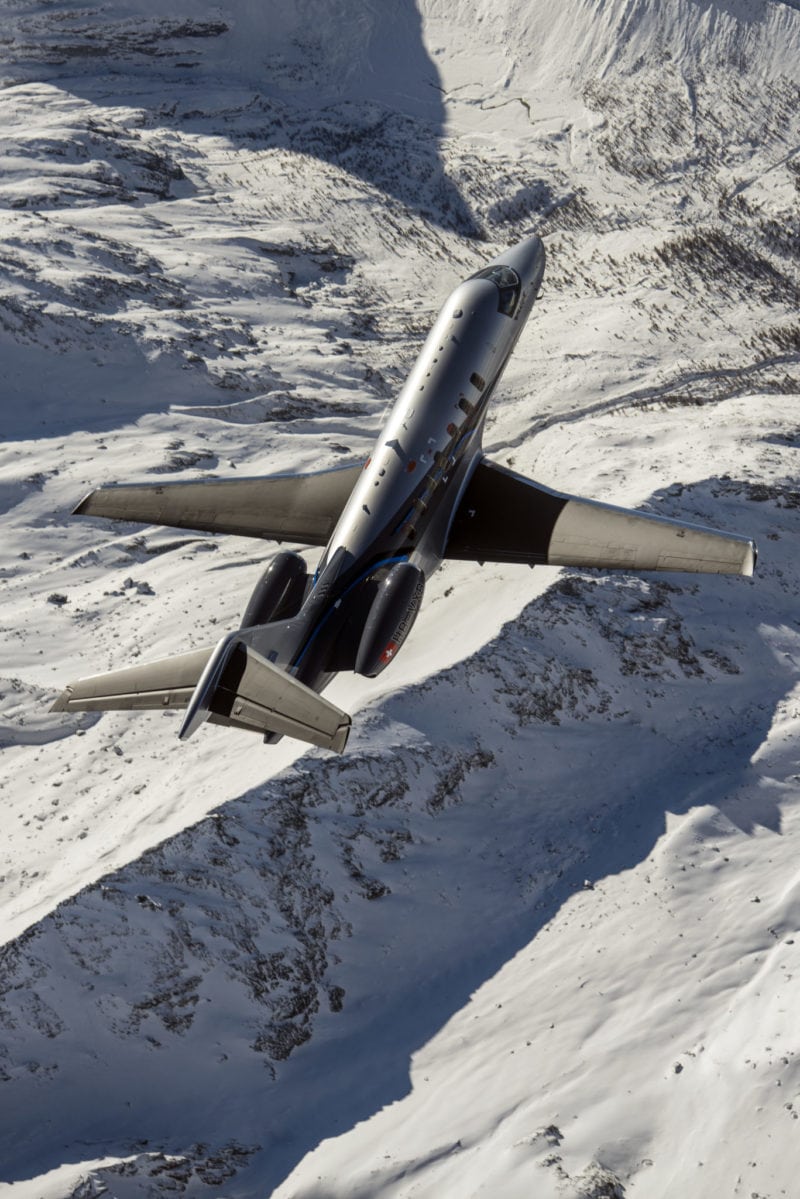
A Pilatus PC-24 business jet. Photo: Pilatus.
One of the biggest concerns business aviation operators have regarding the use of automatic dependent surveillance-broadcast (ADS-B) out, and other surveillance and flight-tracking technologies, is the lack of privacy associated with the movement of their aircraft. While this is an issue that the FAA’s Equip 2020 working group is actively researching in collaboration with the National Business Aviation Assn., there really seems to be a lack of definitive solutions to this issue.
The issue was first raised by NBAA during several meetings with FAA officials between 2013 and 2014, at which time the joint-industry ADS-B Implementation Working Group (JAIWG) was briefed on tracking ADS-B-equipped aircraft using low-cost ground stations and bypassing the protections established in the Blocked Aircraft Registration Request (BARR) program for display of aircraft on situational displays.
U.S.-registered aircraft equipped with Mode S transponders broadcast a 24-bit address code that is assigned to each aircraft registration number, also known in the industry as an aircraft’s International Civil Aviation Org. (ICAO) address. This means the privacy concerns that business aviation operators have go beyond ADS-B., as Jens Hennig, vice president of operations for the General Aviation Manufacturers Association (GAMA) told Avionics.
“The issue is the proliferation of privately owned sensors that monitor the 1090 MHz frequency and combine the downlinked data using the internet to provide a composite traffic picture of all transponder-equipped aircraft including those that are ADS-B-enabled,” Hennig added.
With a few swipes of a mobile touchscreen, anyone with access to a decent Wi-Fi signal can track thousands of aircraft flying all over the world. The proliferation of privately owned sensors referred to by Hennig has been lead by the relatively inexpensive availability of ADS-B ground receivers, like the PiAware GroundStation kit, which includes a Model 3 computer, SD Card, a USB receiver and indoor antenna for less than $100, allowing users to build their own mini ADS-B ground station for the ability to track ADS-B-equipped flights for 100 to 300 miles.
According to NBAA, many business-aircraft operators already participate in the FAA’s Aircraft Situation Display to Industry (ASDI) Block program. However, Mode S transponder technology negates some of the program’s privacy benefits. Each aircraft’s assigned ICAO code is based on the aircraft’s registration and a public algorithm that makes the position of the aircraft publicly available. NBAA is collaborating with the FAA to establish an assortment of ICAO codes for business aircraft operators that would not translate to an aircraft registration number. That would mean, while the code itself may still be able to be tracked publicly, there would be no associated availability of the aircraft’s N number and therefore no information on its owner or operator either.
On its part, FlightAware is actively working with NBAA to address the problem. FlightAware CEO Daniel Baker has even participated in public forums with NBAA directly addressing the privacy concerns of business aviation operators.
“One of the issues here is that the main way to identify an aircraft that is emitting ADS-B is with its Mode S code, the 24-bit identifier and essentially in the U.S., we have one-to-one mapping on each Mode S code and an N number,” Baker told Avionics. “So what we’re working on is addressing the fact that if we can remove that one-to-one mapping and have it not be entirely clear what tail number is a Mode S code, then operators can emit ADS-B and not necessarily be on a blocked list, but not have their information publicly disclosed, and the FAA is warm to that.”
Avionics manufacturers do not have a feasible fix that would technologically allow a 1090 ES-equipped aircraft to fly. 1090 ES is required for Class A and B airspace, where the majority of the Gulfstream, Bombardier and Cessna business jets in the U.S. operate, says Tim Taylor, CEO of FreeFlight Systems. While the 978 MHz UAT specification has an anonymous mode built into it, according to Taylor, the 1090 MHz link does not.
Even with that option, it’s unclear whether the aircraft is truly invisible to publicly available flight-tracking websites and users of ADS-B ground station receivers.
“This a legitimate and real concern,” Taylor told Avionics. “Whether it’s a technical, or whether it ends up being a political or legal, solution around changing the public nature of aircraft registration perhaps, someone is going to figure out how to solve it because it is an important enough problem that someone needs to address it.”